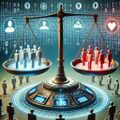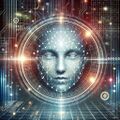Group Z: Difference between revisions
(→Tracy) |
|||
| (22 intermediate revisions by 3 users not shown) | |||
| Line 42: | Line 42: | ||
===Social Media=== | ===Social Media=== | ||
Use of social media continues to be widespread in 2034. Social norms and expectations drive social media use among youth. With the emergence of VR technology in the classroom and more online classes, social media has become a way for youth to connect with friends and participate in social activities inside and outside of schools. | Use of social media continues to be widespread in 2034. Social norms and expectations drive social media use among youth. With the emergence of VR technology in the classroom and more online classes, social media has become a way for youth to connect with friends and participate in social activities inside and outside of schools. | ||
Social media can be considered the turning point for the introduction of VR technologies and innovative teaching methods for school systems in 2034. Teachers in 2024 have begun using social media as a tool to connect with students as a solution to students’ constant need to be on their devices and on social media apps. The teachers would create lesson plans using social media to keep the interest of their students while also imparting knowledge. As this form of teaching started to trend, it was apparent that either new technology or a different method had to be implemented. This is because social media could not be restricted, many accounts are monetized and there was a safety issue with integrating social media into the school system. | |||
As a result, VR technology was tested and was met with overwhelming success in terms of learning potential and also transforming the roles of teachers as more than just conveyors of knowledge. Teachers are now able to personalize lessons and help each student better. | |||
While tech addiction, cyber-bullying, high self-criticisms and isolation are still prevalent, schools are working with parents to establish parental controls and network access to minimize these risks and facilitate better support and community engagement. | While tech addiction, cyber-bullying, high self-criticisms and isolation are still prevalent, schools are working with parents to establish parental controls and network access to minimize these risks and facilitate better support and community engagement. | ||
===Virtual | ===Virtual Reality=== | ||
Due to the issues that using social media as a tool for teaching, VR technology has become prevalent in the classroom and programs to combine schools and remote learning has become the new norm. VR sets have been made accessible to all regardless of income disparities. Schools provide this technology either through subsidies or a loan program for the school year. | |||
In addition to VR technology making learning from anywhere possible, students also have the option to physically go to school, or stay at home and attend class. The social impacts of this change has created a social issue of inclusivity as students can opt to go to school physically, or learn from home; thus transforming physical schools into a place of social gathering. | |||
VR technology also enables students to explore and learn based on their own interests. Educational and simulator games have become popular among students; historical ones in which students can roleplay or explore their surroundings and environment have been adopted into history programs. VR simulator programs work in conjunction with many emerging trade school programs to provide opportunities to learn theory and procedures safely, before graduating to practical applications and working with real materials and tools. | |||
It is predicted that games and simulators will continue to play a pivotal role in education in the near future. These simulator games have seen practical applications in the humanities subjects and science subjects, but have seen more success in trade programs. Developers are looking to expand to cover all subject areas in future releases and are working closely with education programs to provide a comprehensive learning experience. | |||
Students may feel left out of these gatherings among their peers and many have indicated in their end of year evaluations that they find making friends and engaging in physical interactions with their peers difficult. There are worries among parents and teachers that some students have become more insular due to a lack of physical interaction with their peers and VR technology has made socialization among students much more difficult. | |||
===Generative AI=== | ===Generative AI=== | ||
Generative AI has revolutionized every aspect of life, becoming a partner in creativity, decision-making, and problem-solving. Its capabilities extend far beyond generating text or | Generative AI has revolutionized every aspect of life, becoming a partner in creativity, decision-making, and problem-solving. Its capabilities extend far beyond generating text or images - it now produces entire virtual environments tailored to individual needs, from immersive classrooms that adapt to learning styles in real-time to therapeutic landscapes designed to ease mental health struggles. Artists collaborate with Generative AI to co-create films, novels, and symphonies that push the boundaries of human imagination. On a societal level, it predicts trends with uncanny accuracy, designing sustainable cities, optimizing energy use, and even mediating policy decisions through simulations that account for diverse human and environmental impacts. | ||
Generative AI anticipates desires before they are voiced, drafting legal documents, preparing personalized meal plans from nutritional data, or creating wardrobe designs based on the weather and personal style. Education has become a playground of infinite possibilities; students design their own learning journeys with AI mentors, who provide real-time feedback and simulate scenarios impossible to replicate in physical spaces. | Generative AI anticipates desires before they are voiced, drafting legal documents, preparing personalized meal plans from nutritional data, or creating wardrobe designs based on the weather and personal style. Education has become a playground of infinite possibilities; students design their own learning journeys with AI mentors, who provide real-time feedback and simulate scenarios impossible to replicate in physical spaces. | ||
| Line 54: | Line 69: | ||
===Surveillance=== | ===Surveillance=== | ||
Surveillance technologies have reached unprecedented levels, embedding themselves seamlessly into daily life. Smartphones no longer simply store | Surveillance technologies have reached unprecedented levels, embedding themselves seamlessly into daily life. Smartphones no longer simply store data - they actively listen to conversations, delivering hyper-targeted ads and recommendations based on what users discuss. Every purchase, from groceries to online subscriptions, is tracked and analyzed to predict future spending and shape personalized marketing strategies. Life is fully integrated into a single device: smartphones function as wallets, IDs, and keys, holding a comprehensive digital profile accessible across platforms. While this heightened surveillance offers unparalleled convenience and connectivity, it raises critical concerns about privacy and autonomy. Continuous monitoring blurs the line between innovation and intrusion, sparking ongoing debates about who owns personal data and how it should be ethically used. | ||
==Image Gallery== | ==Image Gallery== | ||
<gallery> | <gallery> | ||
Toronto_Skyline_in_2034.jpg|Toronto Skyline in 2034. It looks relatively similar to today, with more high rise density and waterfront development. | Toronto_Skyline_in_2034.jpg|'''Figure 1'''. Note: image generated using the prompt "A photo of the Toronto Skyline in 2034," by OpenAI, DALL-E, 2024 (chatgpt.com). It looks relatively similar to today, with more high rise density and waterfront development. | ||
Empty_playground.jpg|Open outdoor spaces, like playgrounds, are getting less and less use in 2034 as children have far more access to technology that allows them to play and connect in virtual spaces. | Empty_playground.jpg| '''Figure 2'''. Empty Playground. Note: image sourced from Pexels, no attribution required. Open outdoor spaces, like playgrounds, are getting less and less use in 2034 as children have far more access to technology that allows them to play and connect in virtual spaces. | ||
Game_version_0.3x.jpg|'''Figure 3''' Game version 0.3x (n.d.). VR historical role playing games that allow players to really immerse themselves into the environment. | |||
Virtual_Reality_and_its_Applications.jpg|'''Figure 4''' Simovate. (n.d.). VR and its interactive spaces. | |||
Biased_decision_Making.jpg|'''Figure 5''' Visual representation of how algorithms can lead to biased decision-making, with disproportionate outcomes for different groups or an unfair balance tipped by algorithmic processes (Image created by ChatGPT using AI tools, 2024). | |||
Digital_identities.jpg|'''Figure 6''' Digital identities shaped by algorithmic surveillance: a visual representation of how data and algorithms influence self-perception, behaviours, and online experiences (Image created by ChatGPT using AI tools, 2024.). | |||
</gallery> | </gallery> | ||
| Line 70: | Line 88: | ||
===[[Tracy]]=== | ===[[Tracy]]=== | ||
==Image Citations== | |||
OpenAI. (2024). DALL-E (Version 3) [Artificial intelligence system]. https://chatgpt.com | |||
<br> | |||
Game version 0.3x. Holdfast. (n.d.). https://wiki.holdfastgame.com/Game_Version_0.3X | |||
<br> | |||
Simovate. (n.d.). Virtual reality (VR) and its applications. https://www.simovate.com/en/blog/virtual-reality-vr-and-its-applications | |||
Latest revision as of 16:43, 3 December 2024
World Setting[edit]
Year[edit]
2034
City[edit]
Toronto, Ontario, Canada
Overview[edit]
Our new world is set in the Toronto of 2034 - ten years into the future, but what feels like a lifetime away. The city has a familiar energy to today, with the iconic CN Tower still gracing the skyline, though there is a marked increase in the density of high-rise buildings spreading outward from the city centre as the purchase of a fully-loaded "smart" condo in the sky has more appeal to many than the prospect of renovating an older "dumb" home. Familiar challenges of housing, transit, and climate persist, though incremental strides have been made to address them, including the locally-relevant completion of the long awaited Ontario subway line. The streets have seen a gradual decline in commuters - certainly by car - but by foot and bicycle as well, as Toronto adapts to a world where work, socializing, and education - in particular - have become increasingly remote and interconnected. New and more accessible technologies - like virtual reality - bridge the gap between physical and digital life, weaving the city into a networked hub where once distinct neighbourhood lines (a former Hallmark of the 6ix) have blurred and blended somewhat seamlessly with global communities.
State of Society[edit]
Political Climate[edit]
The political landscape is marked by tension between tradition and transformation - the swinging of the political pendulum from one extreme to another has persisted, with less tolerance for middle-ground grey. The government is grappling with balancing the needs of increasingly diverse urban populations, while addressing the persistent challenges of housing affordability, wealth inequality (which is becoming more pronounced and visible as the digital divide rises to the surface of nearly every interaction at home, work, and school), and climate change. Public trust in traditional political institutions remains fragile, and grassroots political movements are becoming more popular and gaining steam at an increased rate given the advanced digital platforms available to connect those who, 10 years ago, would not normally have been connected. In particular, these grassroots movements are looking for far more transparency and accountability from their elected leaders. Global issues like climate change, cybersecurity, and AI regulation are regular topics on the domestic political agenda - local, provincial, and federal - as leaders find themselves navigating these interconnected challenges. Youth of 2034 have a more vested interest and involvement in civic engagement overall, as new technologies have allowed them the ability to participate more directly, reshaping what it means or looks like to be politically active. Youth voting is at an all-time high as Gen Alpha seeks to drive Toronto toward a future that truly reflects their priorities for equity, innovation, and sustainability.
Social Justice[edit]
Social justice is a central force of the political landscape of 2034. Historically marginalized communities have increased access to more advanced communication tools to help amplify their voices, expose systemic inequities, and demand change in real time. However, technical advancements in AI and surveillance technologies (see surveillance section below) have the possibility to be weaponized by government to suppress perceived dissent. This isn't necessarily a new practice in 2034, but rather a practice that is slowly becoming more prevalent in Western society.
Education and the Role of Schooling[edit]
In 2034, formal schooling still exists, but it has evolved dramatically, driven by technology and shifting societal needs. Remote learning is now a common part of education, with many students completing part or all of their schooling from home. This shift has reduced the need for large, centralized school buildings. Schools are increasingly consolidated, with shared facilities used for occasional in-person classes, specialized hands-on labs, and extracurricular activities. Hybrid models combine virtual and physical classrooms, allowing for flexibility while retaining opportunities for face-to-face interaction.
High schools now prioritize preparing students for a rapidly changing workforce. Traditional post-secondary education has declined in popularity, replaced by micro-credentialing programs that offer specific, industry-relevant skills. Courses on artificial intelligence, coding, and technology integration have become central to the high school curriculum, ensuring students graduate with the skills needed to thrive in an AI-driven economy. Simultaneously, there has been a resurgence of interest in trade schools. With automation reducing the demand for office jobs, skilled trades like electrical work, carpentry, and sustainable agriculture are seen as stable and rewarding career paths.
In classrooms, virtual reality (VR) and artificial intelligence (AI) are key tools. VR is used for immersive learning experiences, such as exploring ancient civilizations, walking through human anatomy, or conducting virtual science experiments. However, educators emphasize the importance of balancing screen-based learning with real-world experiences. Programs like Touch Grass Days have emerged, where students take field trips to local farms, nature reserves, or community spaces to engage in hands-on, place-based education. These experiences help students reconnect with their environments, fostering creativity, collaboration, and a deeper understanding of their communities.
Overall, the 2034 education system blends cutting-edge technology with a renewed focus on practical skills and real-world learning, equipping students for both local and global challenges.
Equity, Diversity, and Inclusion[edit]
Overview[edit]
Equity, diversity, and inclusion (EDI) is increasingly woven into the social fabric of 2034 Toronto, shaping education, media, and workplace culture in meaningful ways. Gradual progress over the past decade has led to more normalized and authentic representations of diverse identities and experiences in daily life. From school textbooks featuring math problems that include 2SLGBTQ+ families, to literature and media highlighting the stories of trans individuals, disabled persons, and those from underrepresented cultural backgrounds, the narrative of inclusion is now subtly integrated rather than being the exception.
In the education sector, classrooms reflect this progress with curricula that champion intersectionality and celebrate diverse histories and voices. Teachers are equipped with resources to foster inclusivity, and many students grow up seeing themselves - or others unlike themselves - represented in ways that once seemed groundbreaking. However, this normalization has not come without pushback.
For some, EDI initiatives have sparked significant polarization. Critics, often driven by personal, cultural, or religious beliefs, argue that such inclusivity undermines traditional values or promotes ideologies they oppose. This tension has led to a rise in alternative education pathways, with more parents opting out of public schools in favor of private or secular institutions that align with their worldview. Given the increased prevalence of remote learning, there is less capital expenditure required to "build" these institutions as they can - and many do - exist solely remotely, creating situations of extreme homogeneity and isolation which could become problematic as time passes.
Despite these divides, the broader societal shift toward inclusivity continues to gain momentum. Organizations and institutions increasingly recognize that EDI is not just a moral imperative but also a driver of innovation, empathy, and progress.
EDI and Technology[edit]
Technology both reflects and drives EDI in 2034. Products and platforms prioritize inclusive design principles, thus creating spaces where all individuals can fully participate. Augmented reality for virtually impaired individuals, language translation apps that include traditional indigenous languages, and digital media that showcase diverse avatars, etc. are all examples of what is normal in 2034. Algorithmic bias in AI still exists, though the public is more educated and aware, and thus companies are being held to higher standards to establish stricter oversight mechanisms to check and reduce bias.
Impacts of Technology[edit]
Social Media[edit]
Use of social media continues to be widespread in 2034. Social norms and expectations drive social media use among youth. With the emergence of VR technology in the classroom and more online classes, social media has become a way for youth to connect with friends and participate in social activities inside and outside of schools.
Social media can be considered the turning point for the introduction of VR technologies and innovative teaching methods for school systems in 2034. Teachers in 2024 have begun using social media as a tool to connect with students as a solution to students’ constant need to be on their devices and on social media apps. The teachers would create lesson plans using social media to keep the interest of their students while also imparting knowledge. As this form of teaching started to trend, it was apparent that either new technology or a different method had to be implemented. This is because social media could not be restricted, many accounts are monetized and there was a safety issue with integrating social media into the school system.
As a result, VR technology was tested and was met with overwhelming success in terms of learning potential and also transforming the roles of teachers as more than just conveyors of knowledge. Teachers are now able to personalize lessons and help each student better.
While tech addiction, cyber-bullying, high self-criticisms and isolation are still prevalent, schools are working with parents to establish parental controls and network access to minimize these risks and facilitate better support and community engagement.
Virtual Reality[edit]
Due to the issues that using social media as a tool for teaching, VR technology has become prevalent in the classroom and programs to combine schools and remote learning has become the new norm. VR sets have been made accessible to all regardless of income disparities. Schools provide this technology either through subsidies or a loan program for the school year.
In addition to VR technology making learning from anywhere possible, students also have the option to physically go to school, or stay at home and attend class. The social impacts of this change has created a social issue of inclusivity as students can opt to go to school physically, or learn from home; thus transforming physical schools into a place of social gathering.
VR technology also enables students to explore and learn based on their own interests. Educational and simulator games have become popular among students; historical ones in which students can roleplay or explore their surroundings and environment have been adopted into history programs. VR simulator programs work in conjunction with many emerging trade school programs to provide opportunities to learn theory and procedures safely, before graduating to practical applications and working with real materials and tools.
It is predicted that games and simulators will continue to play a pivotal role in education in the near future. These simulator games have seen practical applications in the humanities subjects and science subjects, but have seen more success in trade programs. Developers are looking to expand to cover all subject areas in future releases and are working closely with education programs to provide a comprehensive learning experience.
Students may feel left out of these gatherings among their peers and many have indicated in their end of year evaluations that they find making friends and engaging in physical interactions with their peers difficult. There are worries among parents and teachers that some students have become more insular due to a lack of physical interaction with their peers and VR technology has made socialization among students much more difficult.
Generative AI[edit]
Generative AI has revolutionized every aspect of life, becoming a partner in creativity, decision-making, and problem-solving. Its capabilities extend far beyond generating text or images - it now produces entire virtual environments tailored to individual needs, from immersive classrooms that adapt to learning styles in real-time to therapeutic landscapes designed to ease mental health struggles. Artists collaborate with Generative AI to co-create films, novels, and symphonies that push the boundaries of human imagination. On a societal level, it predicts trends with uncanny accuracy, designing sustainable cities, optimizing energy use, and even mediating policy decisions through simulations that account for diverse human and environmental impacts.
Generative AI anticipates desires before they are voiced, drafting legal documents, preparing personalized meal plans from nutritional data, or creating wardrobe designs based on the weather and personal style. Education has become a playground of infinite possibilities; students design their own learning journeys with AI mentors, who provide real-time feedback and simulate scenarios impossible to replicate in physical spaces.
Surveillance[edit]
Surveillance technologies have reached unprecedented levels, embedding themselves seamlessly into daily life. Smartphones no longer simply store data - they actively listen to conversations, delivering hyper-targeted ads and recommendations based on what users discuss. Every purchase, from groceries to online subscriptions, is tracked and analyzed to predict future spending and shape personalized marketing strategies. Life is fully integrated into a single device: smartphones function as wallets, IDs, and keys, holding a comprehensive digital profile accessible across platforms. While this heightened surveillance offers unparalleled convenience and connectivity, it raises critical concerns about privacy and autonomy. Continuous monitoring blurs the line between innovation and intrusion, sparking ongoing debates about who owns personal data and how it should be ethically used.
Image Gallery[edit]
Individual Pages[edit]
Dhvani[edit]
Evan[edit]
Hollis[edit]
Tracy[edit]
Image Citations[edit]
OpenAI. (2024). DALL-E (Version 3) [Artificial intelligence system]. https://chatgpt.com
Game version 0.3x. Holdfast. (n.d.). https://wiki.holdfastgame.com/Game_Version_0.3X
Simovate. (n.d.). Virtual reality (VR) and its applications. https://www.simovate.com/en/blog/virtual-reality-vr-and-its-applications





